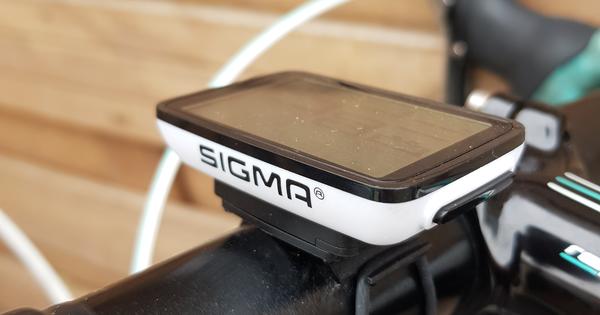In our previous comparison test of Wi-Fi systems, we awarded Netgears Orbi the Best Tested seal of approval. Orbi was at the same time the most expensive system. With the recently introduced RBK40 and RBK30, Netgear brings Orbi to a cheaper price point, the sets cost 345.50 and 329 euros respectively. What is the difference with the more expensive version of Orbi?
Netgear Orbi RBK40 and RBK30
Price: €329 (RBK30), €345.50 (RBK40)Memory: 512 MB RAM and 4 GB flash storage (RBR40 and RBS40), 256 MB RAM and 256 MB flash storage (RBW30)
Router connections: WAN connection (gigabit), 3 x 10/100/1000 network connection
Satellite connections: 4 x 10/100/1000 network connection (RBS40)
Wireless: 802.11b/g/n/ac (two antennas per frequency band, maximum 866 Mbit/s) with beamforming and MU-MIMO
Wireless link to satellite: 802.11ac (two antennas, maximum 866 Mbit/s)
Dimensions: 16.7 x 8.3 x 20.4 cm (RBR40 and RBS40), 8.4 x 7.6 x 16.1 cm (RBW30)
Website: www.netgear.nl
8 Score 80
- Pros
- Access point mode
- Extensive router options
- Good performances
- Negatives
- Limited App
- Star configuration only
Netgear's Orbi, introduced last year, is an impressive Wi-Fi system that we previously awarded a Best Tested seal of approval. Orbi is at the same time one of the more expensive systems on the market. With the RBK40 and RBK30, Netgear offers two cheaper Orbi sets. The router with type number RBR40 is the same in both sets. Like the previous Orbi router, the RBR40 offers a gigabit WAN connection supplemented with three gigabit lan connections. What we miss compared to the earlier Orbi router is a USB connection. However, it has not received any functionality so far, so you are actually not missing anything. The design is almost identical to the existing Orbi, only the new variant is a lot smaller.

Different satellites
The difference between the two newly introduced sets is in the satellites. The RBK40 comes with the satellite RBS40. This satellite has the same housing as the router and is equipped with four network connections. In everything, the RKB40 is therefore a cheaper version of the previously published more expensive Orbi with type number RBK50. The second new set with type number RBK30 has a completely different satellite design with the RBW30. Instead of a tower, you plug the RBW30 directly into the socket, just like a WiFi repeater, for example. For a socket unit, the RBW30 with a height of 16 and a width of 8 centimeters is very large. Compared to the other nodes, this smaller satellite lacks network connections, so you can't use it as a wireless bridge. So you get slightly less functionality with the RBK30 than the other Orbi sets. Moreover, we find the 'repeater style' less convenient in terms of placement than the turrets, but that is partly personal.

Slower mutual link
The big difference with the first version of Orbi is that the new cheaper sets use AC2200 instead of AC3000 technology. Like AC3000, AC2200 is a so-called tri-band system that includes three radios. It concerns two 802.11ac 5GHz radios supplemented by an 802.11n 2.4GHz radio. Clients connect to the 2.4GHz radio and the first 5GHz radio. Both radios support two data streams for a maximum theoretical speed of 400 and 867 Mbit/s. The second 5GHz radio is not used for contact with the clients, but for the mutual link between the nodes. In the cheaper version of Orbi tested in this article, this second 5GHz radio is also a copy with two data streams for a theoretical speed of 867 Mbit/s. If you add these speeds up, you arrive at approximately 2200 Mbit/s or AC2200. The more expensive existing Orbi, which is now the top model in the series, uses an 802.11ac radio with four data steams and a theoretical speed of 1733 Mbit/s for the mutual link between the nodes. If you add up the speeds, you arrive at 3000 Mbit/s or AC3000. AC2200 is also new, Linksys' Velop also uses AC2200 technology. However, Linksys does not necessarily reserve one of the radios for the mutual link, but dynamically determines which radio is used for the mutual link.

Extended Router
In terms of features, the cheaper versions are equivalent to the more expensive Orbi. So you still get a relatively extensive web interface that can compete with the better normal routers in terms of possibilities. For example, Orbi is equipped with a VPN server. Just like their big brother, you can use the cheaper Orbis as a router, but also as an access point system where you use your own router as the basis for your network. Compared to other systems in the market, it is striking that the app lags behind in terms of possibilities. With a configured Orbi system, you can't do much more with the app than adjust the WiFi password. You can now use the app to start using the system. When the first variant of Orbi appeared on the market, there was no app at all. However, other WiFi systems do not have a web interface, which means that Orbi ultimately offers the most possibilities and will also appeal to the more enthusiastic network enthusiast.

Performance
To find out the performance of the Orbi sets, we tested the set over two floors. On the same floor as the router, we achieve a speed of 431 Mbit/s. On the floor where the satellite is located, we achieve an average of 333 Mbit/s. We were unable to detect any significant differences in performance between the RBK40 and RBK30. Both satellites use AC2200 technology and have the same radio configuration on board. However, the RBW30 has less memory and the coverage is slightly less, according to Netgear. The antennas will therefore be slightly less optimal due to the more compact housing, but we do not see that reflected in our test environment. It is noticeable that these cheaper Orbi sets come close to the more expensive Orbi set over a floor. It's no surprise that the performance on the same floor as the router is equivalent to the more expensive Orbi. The client radio is also an 802.11ac variant with two data streams and a theoretical speed of 867 Mbit/s. What does surprise us is that the speed on another floor is not much slower than that of the more expensive Orbi set.
Performance with two satellites
We also tested the new Orbi in combination with two satellites (RBS40 and RBW30) in both the star and mesh scenarios we used in our previous test. In a star scenario with the router on the first floor, we get 348 Mbit/s in the attic and 319 Mbit/s on the ground floor, with the router on the first floor. This cheaper Orbi outperforms Linksys' Velop in a star scenario, which also uses AC2200 technology.
We also tested the AC2200 technology in our 'mesh configuration' where we place the router on the ground floor and then place a node on the first floor and attic. However, Orbi does not (yet) support mesh, so the satellite in the attic has to bridge two floors to make contact with the router. In this configuration, the system is measurably less powerful than the more expensive set based on the AC3000 technology. Where we can achieve a speed of 110 Mbit/s with the more expensive version of the Orbi over two floors, with these Orbis it is only 41 Mbit/s. We expect that once Orbi gets support for a mesh configuration, there will also be a difference between the more expensive AC3000 technology and the cheaper AC2200 technology.
Conclusion
Netgear had an impressive Wi-Fi system on the market with Orbi and actually the smaller brothers turn out to be just as good. With the RBK40 and RBK30, Netgear puts down excellent cheaper versions of the earlier Orbi. In the field test, they approach the performance of the more expensive set and outperform, for example, Linksys' Velop, which uses comparable AC2200 technology. In short, if you are looking for a set with which you want to cover two floors of your house, then the RBK40 or RBK30 is a good buy. If you want a node in more places in your house, it would be useful if Netgear added mesh support. Without mesh support, you'd have to place the router on the middle floor of your house, and that kind of undermines the great advantage of a wireless Wi-Fi system: no pulling cables. The individual satellites will soon be for sale separately and that may be the moment that Netgear introduces blade support. You can then also 'mix and match' and, for example, expand the more expensive Orbi set with one of the new cheaper satellites.

